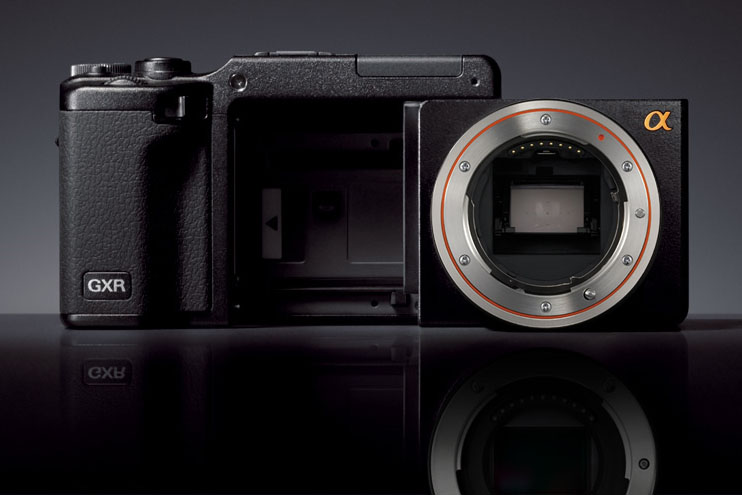25% off on all TOPAZ products

You have two week to save 25% on all Topaz products (Click here).
Reminder: You have bit more than two days left to save 30% on DxO PhotoLab 3.1:

You have two week to save 25% on all Topaz products (Click here).
Reminder: You have bit more than two days left to save 30% on DxO PhotoLab 3.1:

Someone sent me this Ricoh GXR alike Alpha camera. Looks cool but it ain’t going to happen in the next 100 years :)

James Gan
Stork-billed Kingfisher
Singapore
“Bobo” Kingfisher
Sony A9ii and 600mm
Iso2500
F4
Ss2500
Handheld
1) You can submit one single picture per week only.
2) To submit your picture for the weekly readers roundup post you can choose one of the following three options:
– Instagram: Follow @sonyalphagallery and tag us on your picture to give us the permission to repost your image on the instagram gallery and on SAR (we will credit you)
– Facebook: Submit your picture on our group: facebook.com/groups/sonyalphacamera. Please add the hashtag “#sonyalphagallery ” to grant the permission for reposting on SAR. Without the hashtag we will not add your picture!
– Forum: Submit your picture on the SonyAlphaForum image section and add the hashtag “#sonyalphagallery ”
3) Like and comment the pictures from other readers here: instagram.com/sonyalphagallery, facebook.com/groups/sonyalphacamera and on SonyAlphaForum.
4) A selection of most liked pictures by the community and by me SAR admin will be posted weekly on SAR.
Note: When sending a pic feel free to also add a link to your site to promote yourself! And please do share one single picture per week only. Do not spam :)
You have bit more than two days left to save 30% on DxO PhotoLab 3.1.
Reminder: You have two week to save 25% on all Topaz products (Click here).
Chris and Jordan did choose the Sony A7rIV as the camera of the year. I own the camera and couldn’t agree more! It is the Jack of all trades and has served me well in the past months.
Sony A7rIV and new accessories:
Sony A7rIV in USA/CA at BHphoto, Adorama, FocusCamera, Amazon, Henrys.
Sony A7rIV in EU at Calumet DE, ParkUK, WexUK, Calumet NL.
Sony A7rIV in Asia at Sony Japan. Sony Australia.
Sony VG-C4EM grip in USA at BHphoto, Adorama, Amazon, FocusCamera, ParkUK, WexUK.
ECM-B1M Digital Audio Shotgun Microphone at BHphoto, Park UK.
XLR-K3M Mic at BHphoto, Park UK.
AF Tracking on Sony Alpha Cameras
The Sony a6600 is (almost) a great camera for event photographers (Dpreview).
A Guide to the Mirrorless Cameras of 2019 (Explora).
Sony a7RIV fixed-pattern read noise — long exposures (Jim Kasson).
Sony A6600 First look – Best APS-C Camera? (TheDigitalDigest).
Leica 2019 – State of Play (MirrorlessRumors).
Sigma Art 35mm f1.2 / 14-24mm f2.8 review by CameraLabs
Olympus Q2 financial report released: Company doing great but the camera business not so… (43rumors).
Personal photos and tests from SAR Admin Andrea on Instagram, Twitter, Facebook, Flickr and 500px.
Join the new Sony Alpha Camera Facebook group.
To get news from our Forum subscribe that RSS feed.
I kindly invite you all to follow our RSS feed, follow us on Facebook and Twitter to not miss news and rumors
The new Sony SF-M Series Tough UHS-II Memory Cards are now in Stock at BHphoto, FocusCamera and Amazon too. In Europe they are in Stock at Amazon DE, Amazon UK, Amazon FR, Amazon IT, Amazon ES.
More than TOUGH enough
The SF-M TOUGH specification SD card is the world’s toughest UHS-II SD card that is shockproof and has the highest-grade waterproof and dustproof levels. Even in extreme shooting conditions, your work is protected so you can focus on the job in hand.
With ultra-high-speed data transfer of up to 277MB/s read speed and 150MB/s write speed, both photographers and videographers can enjoy the speed benefits of the SF-M TOUGH SD cards, whether shooting high megapixel RAW photographs or recording 4K video. When used with the MRW-S3 USB Hub, backups are swift and buffer times reduced, resulting in a highly optimised workflow.


Also, the new conventional UHS-II SD card “SF-E” series follows to provide users with a wider range of choice. It has fast transfer speeds of up to 270MB/s read and 120MB/s[4] write.
Both the SF-M TOUGH specification SD card and SF-E series include file rescue software[5] to recover accidentally deleted data and photos.